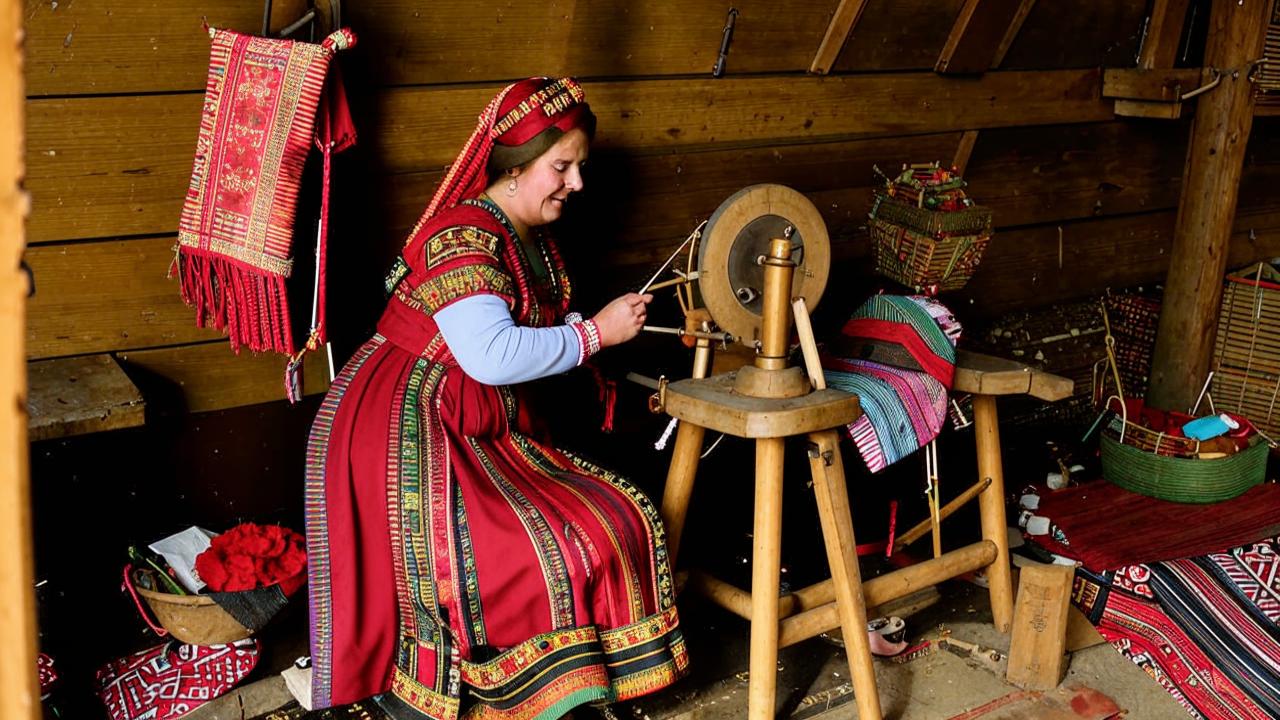Health is priceless, our forefathers understood this. They said, “Health cannot be bought – the mind gives it,” and they approached everything wisely. Of course, back then medicine was much different from modern medicine, and it was really dangerous to get sick. Therefore, special attention was paid to strengthening immunity. Physical activity, a clear daily schedule and moderation in food – that was the way of life of Ivan the Terrible’s contemporaries. Of course, along with farming and other “signs of the times”. Some rules from the way of life of our ancestors should be adopted by us.

A diet rich in vitamins and feasts without overeating
The diet of a resident of tsarist Russia, for example, in the XVI century, depended greatly on his social status: boyars and other power holders ate better than their subjects. However, meat, poultry and fish occasionally appeared on the tables of peasants. Vegetables, fruits, nuts and cereals formed the basis of the diet. All these were foods rich in fiber. They ate radish, turnip, horseradish, peas, apples, cherries and other berries, as well as a lot of fresh herbs. They cooked barley porridge, pea noodles, fried mushrooms and sauerkraut. Vinegar-pickled vegetables were always available. As we know today, this is a source of probiotics, useful for the intestinal microflora.
All production was natural, with no artificial preservatives or colorings. It was possible to preserve the freshness of products in cold cellars and glaciers. People rarely suffered from overeating and overweight; they used to say: “Moderation is the mother of health”.
Several times a year Orthodox Christians kept a fast, when they allowed themselves meat only on certain days – meat-eaters. Although livestock was raised for this purpose, more often on the table were carcasses of wild animals and birds hunted in the forest: hare, marmot, grouse, duck. Fish, a source of omega-3 and omega-6 fatty acids, was always available. In the rivers they caught crucian carp, bream, perch, and sturgeon. During the spawning season, herring could also be caught in fresh waters.
Traditional Russian delicacies – pancakes and pies – were also on the menu, we know about it from “Domostroy” by Protopope Sylvester. They mostly ate healthy sweets, and in small quantities: apple and berry pastilles, honey, watermelons and melons, natural molasses. Even Shrovetide was celebrated in a different way than in the XXI century: the table was served with “kindling, nuts, kernels, cakes, cones, curd mixture, boiled milk, fat dry curd”.

Popular drinks were sours, sweet and fresh, morsels, lingonberry water and bread kvass – a storehouse of vitamins A, B, C, E. And no sweet sodas! Drunkenness was also not welcomed: women were not allowed to drink at all, and men drank only at triznakh (feasts in honor of the dead) and feasts on special occasions. Up to the XV century hop drinks were not strong: wine, mead, beer. Pure alcohol was learned to make later.
Physical activity and hardening
Since ancient times, people have paid great attention to hygiene. It was supposed to go to the bath every week.
One of the most important points of health care was hardening. Washed usually with cold water early in the morning. They bathed not only in a hot bath, but also in cold rivers, and in winter – in ice-holes. Though they did it not only for health-improving purposes – such bathing was also given a ceremonial meaning. There was also a custom to wash with dew on the day of Agraphena Kupalnitsa, which according to the new style falls on July 6).

People got up and went to bed early in Russia. Evening was devoted to rest, prayer, evening meal. They also practiced crafts: weaving, weaving on a spindle, making dishes. However, the sedentary way of life of our ancestors was definitely not. They took care of livestock, worked hard at home and in the field, often to the detriment of their health. But they still took precautions. In summer, work was interrupted at noon. Sensible owners knew how dangerous heat and sunstroke were. On hot days the body was not overloaded with heavy food, drank a lot of water.
They also spent their vacations actively. Russian writer and historian N. M. Karamzin wrote: “Folk games and amusements, still uniform in the Slavic lands: wrestling, fist fighting, running in a race, remained also a monument to their ancient amusements, presenting us the image of war and strength.
Protection for immunity from natural herbal concoctions
Health was strengthened not only by hardening, but also by various herbal infusions. Diseases were treated with folk methods. Only wealthy people could afford foreign healers, although they did not have modern medicines in their vials, but often the same herbs. Most of them can be easily found in a pharmacy even today. Decoctions were made on the basis of nettle, wormwood, plantain, birch sap. Today it is known that the terpenoids in the composition of wormwood perfectly fight viruses, and hamazulenes accelerate the process of tissue regeneration. Nettle infusions stimulate the immune system and have hemostatic properties due to vitamin K. True, such means have contraindications. For example, sensitivity to various allergens.

Drinks based on milk and honey were used to promote health and treat colds. Valerian and motherwort were used for sleep problems. For cramps – medicinal melissa, for stomach inflammations – oregano, for headaches – mountain ash and other herbs. There were a variety of recipes for coughs, ulcers, physical weakness and “heart disease” in the literal sense of the word. Since antiquity it was known about the useful properties of mineral waters. They were called “bogatyr-drinking” or sour water.
Important! Do not self-medicate. Before using folk medicine consult a specialist or consult a doctor.





